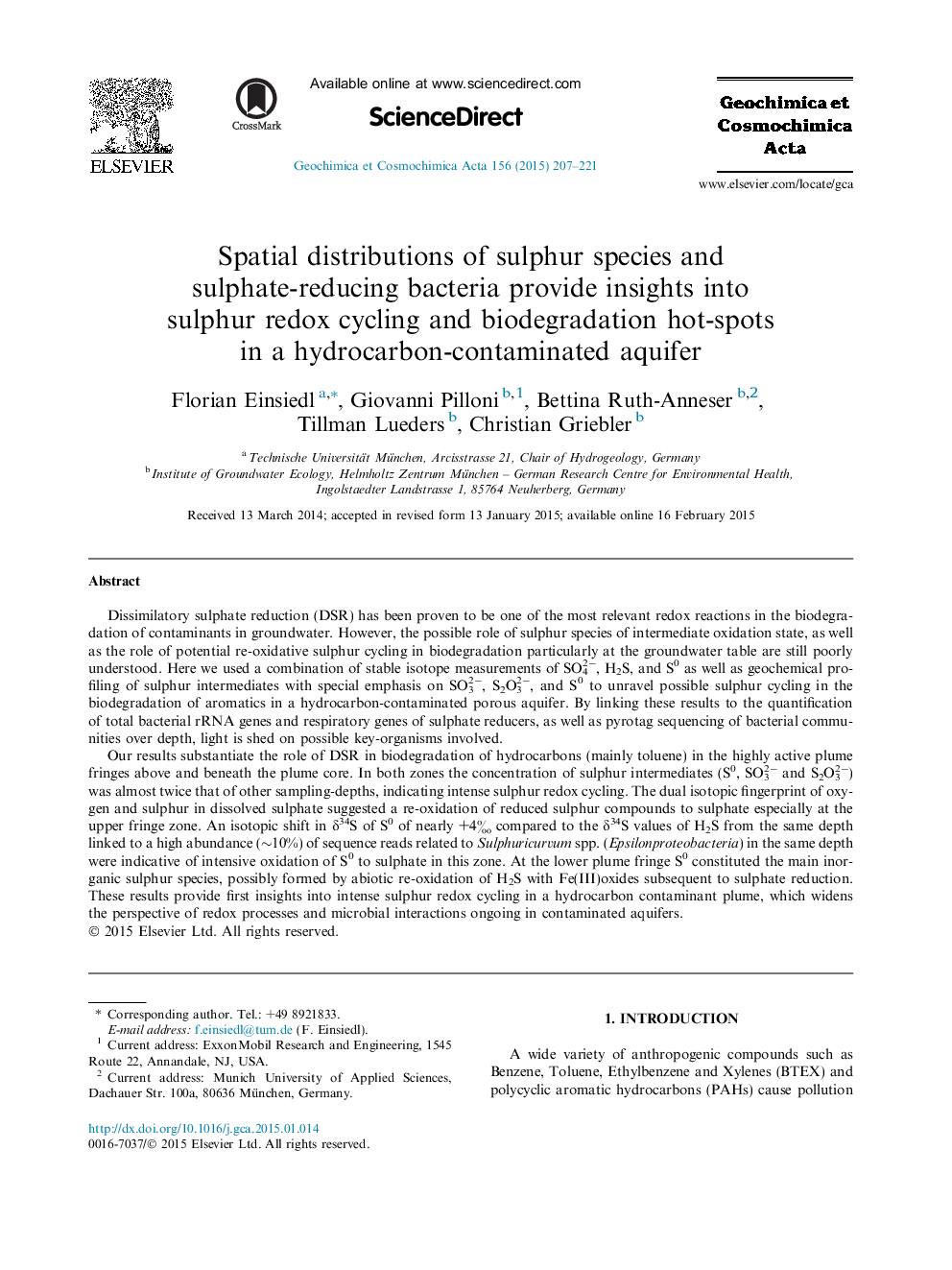| کد مقاله | کد نشریه | سال انتشار | مقاله انگلیسی | نسخه تمام متن |
|---|---|---|---|---|
| 4701949 | 1638001 | 2015 | 15 صفحه PDF | دانلود رایگان |
Dissimilatory sulphate reduction (DSR) has been proven to be one of the most relevant redox reactions in the biodegradation of contaminants in groundwater. However, the possible role of sulphur species of intermediate oxidation state, as well as the role of potential re-oxidative sulphur cycling in biodegradation particularly at the groundwater table are still poorly understood. Here we used a combination of stable isotope measurements of SO42−, H2S, and S0 as well as geochemical profiling of sulphur intermediates with special emphasis on SO32−, S2O32−, and S0 to unravel possible sulphur cycling in the biodegradation of aromatics in a hydrocarbon-contaminated porous aquifer. By linking these results to the quantification of total bacterial rRNA genes and respiratory genes of sulphate reducers, as well as pyrotag sequencing of bacterial communities over depth, light is shed on possible key-organisms involved.Our results substantiate the role of DSR in biodegradation of hydrocarbons (mainly toluene) in the highly active plume fringes above and beneath the plume core. In both zones the concentration of sulphur intermediates (S0, SO32− and S2O32−) was almost twice that of other sampling-depths, indicating intense sulphur redox cycling. The dual isotopic fingerprint of oxygen and sulphur in dissolved sulphate suggested a re-oxidation of reduced sulphur compounds to sulphate especially at the upper fringe zone. An isotopic shift in δ34S of S0 of nearly +4‰ compared to the δ34S values of H2S from the same depth linked to a high abundance (∼10%) of sequence reads related to Sulphuricurvum spp. (Epsilonproteobacteria) in the same depth were indicative of intensive oxidation of S0 to sulphate in this zone. At the lower plume fringe S0 constituted the main inorganic sulphur species, possibly formed by abiotic re-oxidation of H2S with Fe(III)oxides subsequent to sulphate reduction. These results provide first insights into intense sulphur redox cycling in a hydrocarbon contaminant plume, which widens the perspective of redox processes and microbial interactions ongoing in contaminated aquifers.
Journal: Geochimica et Cosmochimica Acta - Volume 156, 1 May 2015, Pages 207–221
